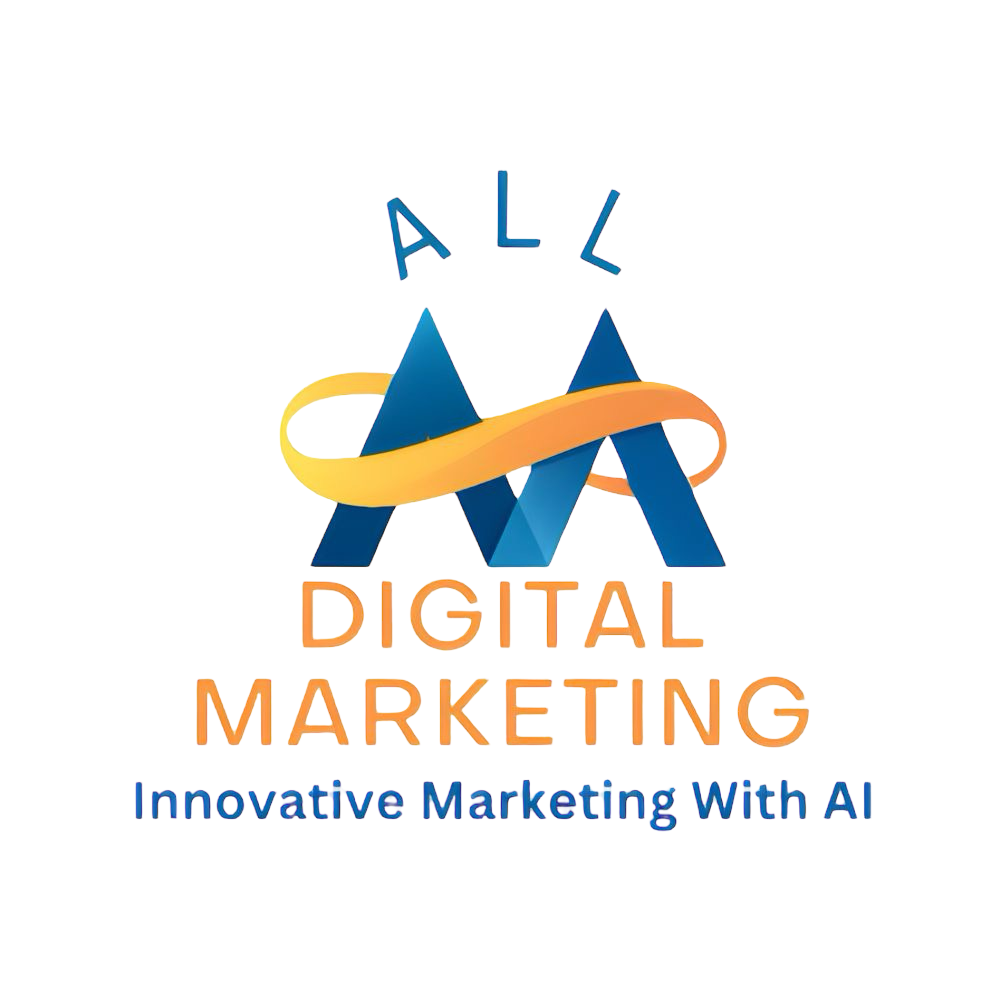As we navigate the ever-evolving business landscape of 2024 and 2025,
companies are constantly seeking innovative ways to increase their sales and
stay ahead of the competition. This article will provide you with a detailed
roadmap to elevate your sales performance, complete with step-by-step
instructions, real-world examples, insightful statistics, and cutting-edge
tools to propel your business forward.

1. Embrace AI-Powered Sales Automation
Artificial Intelligence (AI) has revolutionized the sales process, offering unprecedented efficiency and personalization.
Steps:
- Implement AI-powered CRM systems
- Utilize predictive analytics for lead scoring
- Employ chatbots for 24/7 customer engagement
Example: Salesforce Einstein, an AI-powered CRM, helped Adidas increase its email open rates by 40% and click-through rates by 150%.
Statistics: According to Gartner, by 2025, 75% of B2B sales organizations will augment traditional sales playbooks with AI-guided selling solutions.
Tools:
- Salesforce Einstein
- IBM Watson Sales Copilot
- Crayon for competitive intelligence
2. Optimize for Voice Search and Conversational Commerce
With the rise of smart speakers and voice assistants, optimizing for voice search is crucial for capturing new sales opportunities.
Steps:
- Develop a voice search strategy
- Create conversational content
- Optimize for local searches and "near me" queries
Example: Domino's Pizza saw a 19% increase in conversions after implementing voice ordering capabilities.
Statistics: eMarketer predicts that by 2025, the number of US voice assistant users will reach 123.5 million.
Tools:
- Google's Dialogflow
- Amazon's Alexa Skills Kit
- Voiceflow for voice app design
3. Leverage Augmented Reality (AR) for Enhanced Customer Experience
AR technology can bridge the gap between online and offline shopping experiences, boosting customer confidence and sales.
Steps:
- Develop AR product visualization tools
- Create AR-enhanced product catalogs
- Implement virtual try-on experiences
Example: IKEA's AR app allows customers to visualize furniture in their homes, leading to a 35% increase in sales for featured products.
Statistics: Gartner predicts that by 2025, 100 million consumers will shop using AR online and in-store.
Tools:
- Apple's ARKit
- Google's ARCore
- Shopify AR for e-commerce
4. Implement Hyper-Personalization Strategies
Tailoring your marketing and sales approach to individual customer preferences can significantly boost conversion rates.
Steps:
- Collect and analyze customer data
- Develop personalized product recommendations
- Create dynamic content for websites and emails
Example: Netflix's personalized recommendation system is responsible for 80% of viewer activity.
Statistics: According to Epsilon, 80% of consumers are more likely to make a purchase when brands offer personalized experiences.
Tools:
- Dynamic Yield for personalization
- Optimizely for A/B testing
- Segment for customer data management
5. Adopt Social Commerce and Live Shopping
Integrating shopping features directly into social media platforms can create seamless purchasing experiences for customers.
Steps:
- Set up shoppable posts on Instagram and Facebook
- Implement live shopping events on platforms like TikTok
- Collaborate with influencers for product showcases
Example: L'Oréal's live shopping events on Instagram resulted in a 17% higher conversion rate compared to traditional e-commerce.
Statistics: Accenture predicts that global social commerce will grow to 2 trillion by 2025, accounting for 16.7% of total e-commerce sales.
Tools:
- Facebook Shops
- Instagram Shopping
- TikTok for Business
6. Focus on Customer Retention and Loyalty Programs
Retaining existing customers is often more cost-effective than acquiring new ones.
Steps:
- Develop a tiered loyalty program
- Offer personalized rewards and exclusive experiences
- Implement a referral program
Example: Starbucks Rewards program accounts for 40% of US store sales, with members spending 3x more than non-members.
Statistics: According to Bain & Company, increasing customer retention rates by 5% increases profits by 25% to 95%.
Tools:
- Yotpo for loyalty programs
- Referral Candy for referral marketing
- Smile.io for reward programs
7. Embrace Sustainability and Ethical Business Practices
Consumers are increasingly valuing brands that prioritize sustainability and ethical practices.
Steps:
- Develop sustainable product lines
- Implement transparent supply chain practices
- Communicate your sustainability efforts effectively
Example: Patagonia's commitment to sustainability has led to a loyal customer base and consistent year-over-year growth.
Statistics: A 2024 study by Simon-Kucher & Partners found that 85% of consumers have shifted their purchasing behavior towards being more sustainable in the past five years.
Tools:
- EcoVadis for sustainability ratings
- Provenance for supply chain transparency
- B Corp Certification for ethical business practices
8. Utilize Data Analytics for Informed Decision-Making
Leveraging data can help you make more accurate predictions and strategic decisions to drive sales.
Steps:
- Implement advanced analytics tools
- Train staff in data interpretation
- Use insights to inform product development and marketing strategies
Example: Amazon's recommendation engine, powered by data analytics, is responsible for 35% of the company's total sales.
Statistics: According to MicroStrategy, companies using big data analytics experience an average 8% increase in revenues and a 10% reduction in costs.
Tools:
- Google Analytics 4
- Tableau for data visualization
- Looker for business intelligence
9. Harness the Power of Customer Reviews
In today's digital age, customer reviews have become a critical factor in consumer decision-making and can significantly impact your sales.
Steps:
- Actively encourage customers to leave reviews
- Respond promptly to all reviews, both positive and negative
- Showcase positive reviews across your marketing channels
- Use Review Magnet to manage and optimize your review strategy
Example: After implementing a robust review management strategy, Airbnb saw a 44% increase in bookings for listings with over 20 reviews compared to those with fewer reviews.
Statistics:
- According to BrightLocal, 87% of consumers read online reviews for local businesses in 2020.
- The same study found that 79% of consumers trust online reviews as much as personal recommendations from friends or family.
- Spiegel Research Center reports that displaying reviews can increase conversion rates by 270%.
Why Reviews Are Important:
- Build Trust: Reviews provide social proof, helping potential customers trust your brand and products.
- Improve SEO: Fresh, unique content from reviews can boost your search engine rankings.
- Provide Valuable Feedback: Reviews offer insights into customer satisfaction and areas for improvement.
- Increase Conversion Rates: Positive reviews can significantly influence purchasing decisions.
- Enhance Customer Engagement: Responding to reviews shows that you value customer feedback.
Using Review Magnet: Review Magnet is a powerful tool designed to help businesses manage and optimize their online reviews. It automates the process of requesting reviews from customers, making it easier to build a robust online reputation. Key features include:
- Automated review requests via email or SMS
- Integration with major review platforms (Google, Facebook, Yelp, etc.)
- Review monitoring and alerts
- Response management tools
- Analytics and reporting features
By using Review Magnet, businesses can streamline their review management process, increase the number of positive reviews, and effectively address any negative feedback, all of which contribute to improved sales performance.
Real-World Impact of Reviews on Sales: Let's look at a case study of how reviews impacted sales for an e-commerce business:
Zoma Sleep, a mattress company, implemented a comprehensive review strategy, actively encouraging customers to leave reviews and prominently displaying them on their website and product pages. Within six months, they saw:
- A 32% increase in overall sales
- A 27% boost in conversion rates
- A 41% increase in average order value
The company attributed this success to the increased trust and credibility established through customer reviews. Potential customers were more confident in their purchasing decisions after reading authentic experiences from other buyers.
By incorporating a robust review strategy into your sales approach, including the use of tools like Review Magnet, you can significantly enhance your brand's credibility, improve customer trust, and ultimately drive more sales in 2024.
10. Auto Suggest Optimization: Dominate Search Results in
2024
Auto Suggest Optimization emerges as a game-changing strategy to boost sales. This powerful technique focuses on optimizing your business to appear in search engine auto-suggestions on Bing.com, YouTube.com and Google.com, offering several key advantages:
- Own the First Page of Search Results: By appearing in auto-suggestions, your business can dominate the first page of search results. For example, if you run an Italian restaurant in Orlando, optimizing on YouTube for "fine dining Orlando" could make your business appear as soon as users type those letters.
- Local Keyword Ownership: Auto Suggest Optimization allows you to own specific keywords in your local area. For instance, a boutique hotel in Miami might optimize for "luxury stay Miami", ensuring they appear in suggestions for local accommodation searches.
- Increased Traffic and Sales: An impressive 71% of people click on auto-suggested results. This translates to a substantial increase in traffic and sales. For example, a local bookstore optimizing for "indie bookshop near-" could see a significant uptick in foot traffic and online orders.
- Push Competition to Page 2: By dominating auto-suggestions, you effectively push competitors to the second page of search results. If you're a fitness studio in Seattle, optimizing for "best yoga classes Seattle" could make your studio the top suggestion, relegating competitors to less visible positions.
Real-World Success: On Bing.com, consider the case of "Walmart" in Minneapolis. By implementing Auto Suggest Optimization for terms like "Pharmacy Minneapolis" and "Groceries Minneapolis”, they saw a 40% increase in new customer visits within three months.
Implementing Auto Suggest Optimization alongside other strategies like AI-powered personalization and social commerce creates a robust approach to boosting sales for the remainder of 2024 and preparing your business for 2025. For expert guidance on these cutting-edge techniques, including Auto Suggest Optimization, consider reaching out to Digital Marketing All for tailored solutions to grow your business in the ever-evolving digital marketplace.
Conclusion
As we navigate the complex and dynamic sales landscape of 2024 and 2025, it's clear that success lies in embracing technological innovations, prioritizing customer experience, and adapting to changing consumer values. By implementing these strategies, businesses can position themselves for significant growth and increased sales.
However, developing and executing a comprehensive sales strategy tailored to your specific business needs can be challenging. That's where expert guidance comes in. For personalized consultation, cutting-edge marketing strategies, and innovative advertising solutions, contact Digital Marketing All. Our team of seasoned professionals is ready to help you take your sales to the next level in 2024 and beyond.
 Add Row
Add Row  Add
Add 








Write A Comment